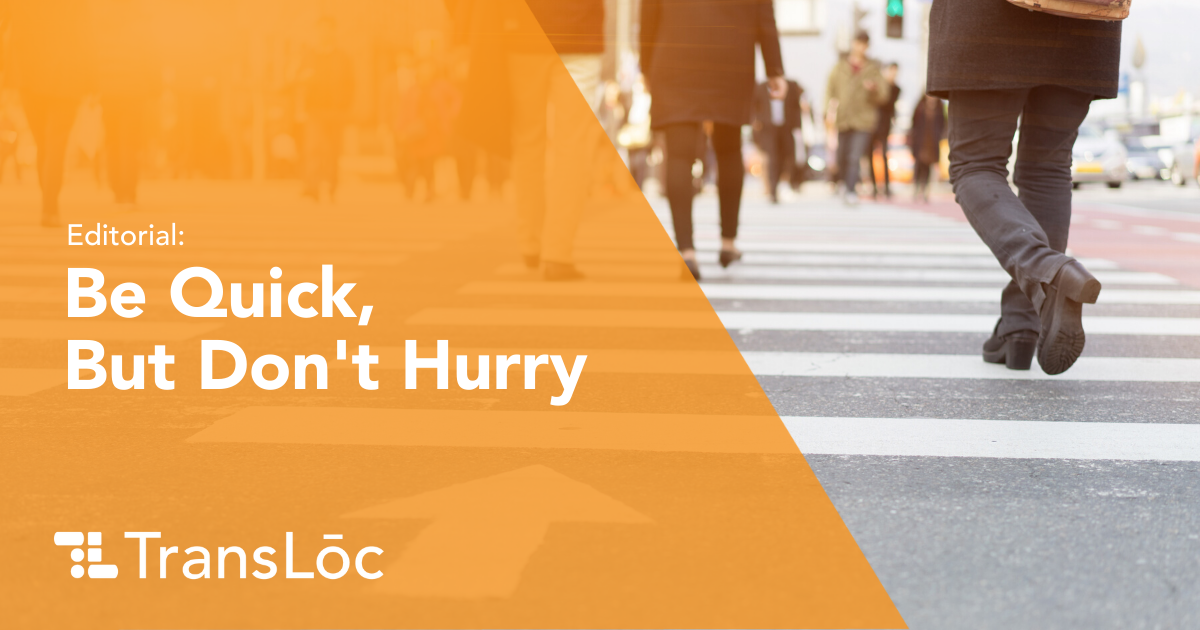
On his way to winning 10 national championships as a basketball coach at the University of California Los Angeles, John Wooden coined many “Woodenisms” — sayings that encompassed his worldview and teaching style. My favorite is one that applies equally as well off the basketball court:
“Be quick, but don’t hurry.”
For Wooden, this maxim meant that his players needed to make quick decisions and move deliberately, but not to rush, as that was when unforced errors could occur.
The same is true in our cities, where many leaders face pressure to make decisions on new mobility options like electric scooters, microtransit, and automated vehicles.
At the same time, city leaders are also dealing with streets that are increasingly dangerous. In the first six months of 2020, the pedestrian fatality rate was up double digits, meaning every day that we don’t make safe, reliable mobility — whether sidewalks, public transit, or bike/scooter lanes — available to more people, people are dying. As Executive Director of Oregon Walks Ashton Simpson told me, “When people are in need, who the hell wants to wait?”
Perhaps because of their small form factor and regulation loopholes, some scooter companies in 2018 borrowed from the Uber playbook and launched seemingly overnight in several cities without an official relationship with the city. Some of these cities, like Santa Monica, quickly created a pilot to remedy the scooter chaos. Still though, cities had to respond to the private sector timeline, not their own, when dreaming up initial regulations and pilot plans.
Even despite some formal regulations, many cities like Brussels are still navigating how to address some of the frequent complaints that community members have about scooters. I know I have picked up my fair share of fallen scooters that were blocking a sidewalk or ADA ramp.
These experiences framed my perspective when I journeyed to Pittsurgh in September, which I covered on a special episode of The Movement Podcast. While scooters have been on U.S. city streets for years, the city of Pittsburgh just now welcomed them, three and a half years after they landed in other U.S. cities.
Pittsburgh certainly wasn’t hurrying. Why?
Pittsburgh took its time to identify what exactly they wanted to accomplish, not just with scooters, but with a whole suite of transportation and mobility options like bikeshare, mopeds, and carpool to complement a robust public transit network. The result? Instead of scooters littering the sidewalks, Pittsburgh delineated some clear standards, including implementing over 50 Spin Mobility Hubs in existing parking spaces to prevent scooters from being parked on the sidewalks.
Instead of reacting to the private sector, Pittsburgh proactively determined the outcomes they wanted and then invited the private sector to dream up ways to accomplish them. Both the public sector and private sector had to give a little to get what they wanted. In this case, the city gave up parking spaces for the Mobility Hubs while Spin conceded that the scooters would be safe even if they were parked near cars on the street.
New York took a similar measured approach to their scooter rollout. Again, three and a half years after dockless scooters first rolled out, New York City finally allowed scooters on its streets, and even then, not in the places that you might be expecting them like Manhattan or even Brooklyn. Instead, the first 3,000 shared scooters will be found in the East Bronx, a diverse community of 570,000 residents, specifically chosen because of it’s comparative lack of public bikeshare access. And the three scooter companies chosen for the pilot — Bird, Lime, and Veo — committed to ensuring that wheelchair-accessible vehicles would also be available.
It’s refreshing to see places like Pittsburgh and New York do it right, but there is obviously no easy answer here. The first step in addressing the private sector’s request to reshape mobility on city streets and the public sector’s motivation to maintain pedestrian safety is to take a deep breath, engage key community stakeholders, and co-create together.
In another famous Woodenism, Coach Wooden preached, “If you don’t have time to do it right, when will you have time to do it over?”
On something as important as mobility, we don’t have time to do it over.